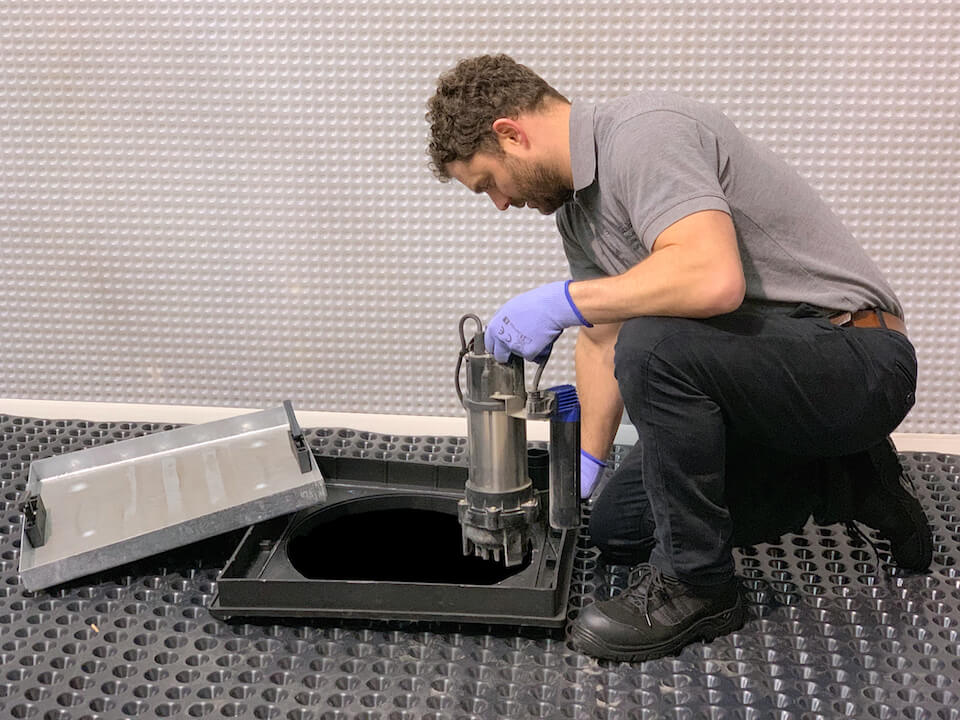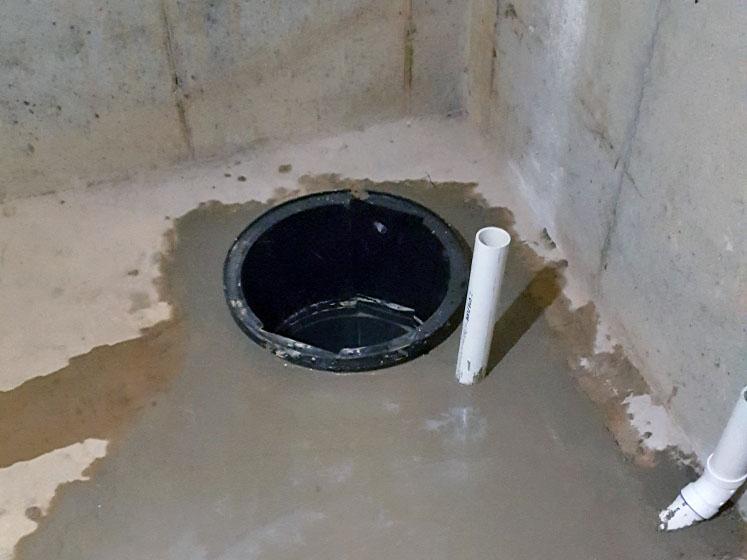Trusted Methods for Taking Care of a Sump Pump
Trusted Methods for Taking Care of a Sump Pump
Blog Article
The article which follows about How to Care for Your Sump Pump is relatively stimulating. Don't overlook it.

Sump pumps are crucial parts in numerous homes, especially in areas prone to flooding or extreme wetness. They aid protect against water damage by successfully eliminating excess water from basements or crawl spaces. Nonetheless, like any other home appliance, sump pumps need regular maintenance to ensure they function properly when needed one of the most. Cleansing your sump pump is a crucial part of its upkeep, and understanding how to do it appropriately can save you from pricey fixings and potential catastrophes.
Intro
Maintaining a tidy sump pump is important for its correct functioning and longevity. Disregarding this important job can bring about clogs, malfunctions, and eventually, water damage to your property. Consequently, finding out exactly how to clean up a sump pump is important for property owners that count on these tools to keep their cellars completely dry and safeguarded.
Recognizing the Sump Pump
Before diving into the cleansing process, it's essential to have a standard understanding of how a sump pump works. Usually mounted in a pit or container listed below the basement floor, a sump pump consists of numerous essential components, consisting of a pump, a float switch, and a discharge pipe. When water accumulates in the pit, the float button turns on the pump, which then pumps the water out via the discharge pipeline, away from the building's foundation.
Indicators of a Dirty Sump Pump
Knowing when your sump pump requires cleaning is important for stopping potential malfunctions. Some usual indicators that indicate a filthy sump pump include odd noises during procedure, decreased water circulation, and noticeable debris in the pit. If you observe any one of these symptoms, it's important to cleanse your sump pump quickly to prevent any kind of more issues.
Getting ready for Cleansing
Prior to you start cleansing your sump pump, it's vital to take some safety precautions. Start by turning off the power to the pump to prevent any type of electrical accidents. Furthermore, wear suitable protective equipment, such as handwear covers and safety glasses, to secure on your own from dust, debris, and prospective microorganisms.
Detailed Overview to Cleaning a Sump Pump
Turning off the Power
Begin by detaching the power supply to the sump pump to avoid any type of mishaps while cleaning.
Eliminating Debris and Dirt
Use a bucket or an inside story to remove any visible debris, dust, or debris from the sump pit. Dispose of the particles effectively to avoid it from obstructing the pump or the discharge pipe.
Cleansing the Pump and Drift Switch Over
Once the pit is free from debris, carefully get rid of the pump from the pit. Inspect the pump and the float switch for any signs of damages or wear. Make use of a soft brush or fabric to clean the surface areas and remove any type of built up grime.
Flushing the System
After cleaning the pump and float switch, purge the sump pit with clean water to eliminate any continuing to be dust or debris. This will certainly assist ensure that the pump operates efficiently and successfully.
Looking For Correct Performance
Prior to reinstalling the pump, do a quick examination to make certain that the float button triggers the pump correctly. Put some water right into the sump pit and observe the pump's operation. If everything is working properly, you can reassemble the pump and reconnect the power supply.
Maintenance Tips to Maintain Your Sump Pump Clean
Along with regular cleaning, there are several maintenance suggestions you can follow to keep your sump pump in ideal problem:
Conclusion
Cleansing your sump pump is an essential facet of its maintenance and makes sure that it operates effectively when you require it the most. By adhering to the steps laid out in this guide and including regular maintenance right into your routine, you can expand the life expectancy of your sump pump and shield your home from water damage.
6 STEPS ON HOW TO CLEAN A SUMP PUMP PROPERLY
UNDERSTANDING SUMP PUMPS
Your sump pump plays a crucial role in protecting your home by managing and removing excess water. It primarily functions as a “shield”, guarding your basement against the damaging effects of water accumulation. The pump is housed in a sump pit in the lowest part of your basement, and its job is to pump out any water that collects there.
During heavy rainfalls or when snow melts rapidly, water can infiltrate your basement, posing potential risks like flooding, structural damage, and harmful mold growth. Here, the sump pump springs into action, pumping out the intruding water and directing it away from your home.
SAFETY FIRST
Before cleaning, remember to prioritize safety. Disconnect the sump pump from the power source to prevent any accidental electric shocks. Also, wear sturdy gloves to protect your hands from any sharp or dirty components within the pump.
REMOVE THE SUMP PUMP
After ensuring your safety, the next step is to remove the sump pump from its pit. Doing this might require careful maneuvering as you don’t want to damage any pump components. Once removed, clean the sump pit to remove any accumulated debris or sludge.
INSPECT THE PUMP
Inspect the pump for any visible signs of wear or damage. Check the power cord, float switch, and impeller housing. If any components look worn out or damaged, consider replacing them to ensure optimal performance.
CLEAN THE PUMP
Thoroughly clean the pump with warm, soapy water. Make sure to rid it of any dirt, gravel, or other debris that might impede its performance. You can use a toothbrush to clean the small, hard-to-reach parts of the pump.
REINSTALL THE SUMP PUMP
Reinstall the pump into the sump pit Make sure it’s positioned correctly to remove the water effectively Once it’s back in place, reconnect it to the power source TEST THE PUMP
Finally, pour some water into the pit to ensure the pump works correctly. It should start automatically and begin pumping out the water; if it doesn’t, check the power source and the positioning of the pump.
Remember, while cleaning your sump pump is an essential part of home maintenance, hiring a professional plumber for a thorough inspection and cleaning at least once a year is also important. This will ensure that your pump is in optimal condition, ready to protect your home from potential water damage.
BEST PRACTICES FOR CLEANING SUMP PUMP DISCHARGE PIPES
Regular Inspection: Regularly inspect your discharge pipes, especially during heavy rainfall or snowmelt periods. Look for any signs of blockage or damage. Early detection of problems can prevent serious issues down the line. Periodic Cleaning: Over time, sediment and debris can accumulate in the discharge pipes, impeding the flow of water. Regular cleaning helps keep the pipes clear and functioning efficiently. You can use a high-pressure water jet to effectively clean the pipes. Insulation During Winter: In colder climates, discharge pipes can freeze, blocking the outflow of water. Protect your discharge pipes from freezing temperatures by insulating them with foam pipe insulation. This will ensure the sump pump can continue to discharge water even in freezing conditions. Proper Positioning: The discharge pipe should be positioned to direct water away from your home’s foundation. Improper positioning can lead to water seeping back into the basement. Ensure the pipe is long enough and angled correctly. Installation of a Check Valve: A check valve prevents water from flowing back into your sump pit after the pump has pushed it out. Installing a check valve helps maintain the efficiency of your sump pump and reduces the risk of flooding. Minimize Pipe Turns: Every curve or turn in the discharge pipe can decrease the efficiency of water flow. By minimizing turns and bends in your discharge pipe, you can increase the efficiency of your sump pump. https://www.fullspeedplumbing.com/how-to-clean-a-sump-pump-properly9999/

Hopefully you liked our excerpt about . Thanks so much for taking time to read our article. Are you aware of another person who is interested in the topic? Be sure share it. I praise you for being here. Come back soon.
Call Today Report this page